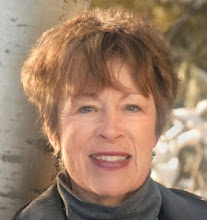Throughout her life in Taos, Mabel attended various Pueblo celebrations. Of all of the holiday events, Christmas Eve at Taos Pueblo is one of the most special. The Pueblo people gather pitch pine, cut it to various lengths, and stack it criss-crossed to build ricks of wood from one foot to twelve feet high. These are lit just after dusk, and the whole area between the North and South houses come alive with bonfires. The fires light the Christmas Eve procession around the Taos Pueblo plaza that follows mass at the San Geronimo church. It's magical, as a description from D.H. Lawrence conveys:
Never shall I forget the Christmas dances at Taos, twilight, snow, the darkness coming over the great wintry mountains and the lonely pueblo, then suddenly, again, like dark calling dark, the deep Indian cluster -- singing around the drum, wild and awful, suddenly rousing on the lost dusk as the procession starts. And then the bonfires leaping suddenly in spurts of high flame, columns of sudden flame forming an alley for the procession.*
Over the years my friend Judith Bronner has photographed this event (here, the plaza in front of the North House at dusk, just before the procession), and I share one of her pictures with you.
 | |
| "Christmas Eve", Taos Pueblo © 2010 Judith Bronner |
When guests at the Mabel Dodge Luhan House return after the Pueblo festivities, a cheery fire and steaming bowls of posole await them. This spicy hominy stew, a dish for celebrating life’s blessings, is served throughout New Mexico. It can be made either with red or green chile. The recipe here (below), made with pork and using dried red chiles, is quite traditional. However, chicken, turkey, or vegetable protein may be substituted for the pork. Enjoy.
Adios for now,
Liz
Liz
Photo courtesy of Judith Bronner. Thank you, Judith!
* Quote from "New Mexico" typescript, D.H. Lawrence Papers, AC 131-p, Angélico Chávez History Library, Museum of New Mexico, Santa Fe.
Posole Recipe:
12 dried long red chile**
3 pounds boned pork roast cut into 1" cubes
1/2 head of garlic peeled and chopped
A large pinch of Mexican oregano
1/2 large onion, chopped
1 large (industrial-size) can hominy
Salt and pepper to taste
3 pounds boned pork roast cut into 1" cubes
1/2 head of garlic peeled and chopped
A large pinch of Mexican oregano
1/2 large onion, chopped
1 large (industrial-size) can hominy
Salt and pepper to taste
Directions:
1.Break open the chiles and remove the seeds and veins.
2. Put the chiles to cook in a medium sized pot. Cover with fresh water and gently boil until chiles are very soft.
3. Let the mixture cool and using a favorite method, blend the chile and the water to make a paste and strain.
4. Put the cubed pork, oregano, garlic, onion and salt into a large heavy pot and cover with water. Boil meat gently for 30 minutes.
5. When the meat is soft, add the chile and hominy and cook for 15 to 20 minutes until the mixture is boiling nicely. Add oregano, and salt and pepper to taste.
2. Put the chiles to cook in a medium sized pot. Cover with fresh water and gently boil until chiles are very soft.
3. Let the mixture cool and using a favorite method, blend the chile and the water to make a paste and strain.
4. Put the cubed pork, oregano, garlic, onion and salt into a large heavy pot and cover with water. Boil meat gently for 30 minutes.
5. When the meat is soft, add the chile and hominy and cook for 15 to 20 minutes until the mixture is boiling nicely. Add oregano, and salt and pepper to taste.
To serve, ladle the posole into heavy bowls and serve with thinly sliced cabbage and radishes, quartered limes, and fresh corn tortillas.
This recipe serves 20-24 people.
**Using frozen or powdered red or green chile eliminates steps 1-3 -- the preparation and cooking time for the chile mixture.

So glad you posted about the Christmas Eve celebrations! It is my favorite thing as well. Christmas isn't Christmas without it. The Taos Pueblo supports our life here in New Mexico!
ReplyDeleteI live in Santa Fe and have never attended the Christmas dances. My dear friend, who's married to a Taosena never misses them. I was raised Catholic (not practicing). Hearing his descriptions tells me they are performing what I knew as Holy Mass; but the truth to spirit are very different. I hope I have the opportunity to attend one day.
ReplyDelete